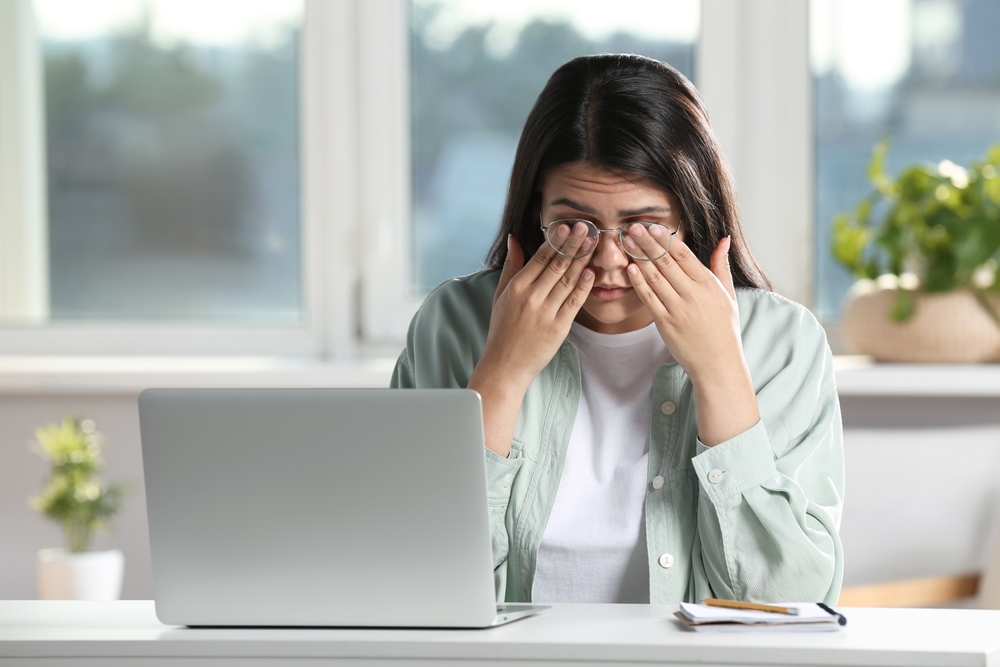
In today's digitally-driven world, the use of screens has become an integral part of our lives. From computers and smartphones to tablets and televisions, screens are everywhere, serving as our primary source of entertainment, information, and communication. However, this increased screen time comes with a price—a condition known as dry eye. It is essential to understand the relationship between screen time and dry eye, the causes and symptoms of this condition, and how to manage and prevent it effectively.
Understanding Dry Eye
Dry eye is a multifactorial condition often caused by an imbalance in the tear system of the eye. The tear film, a thin layer of moisture that covers the eye's surface, is crucial for maintaining eye health and ensuring clear vision. When there are abnormalities in the tear film, it can result in dry eyes.
Several factors can cause dry eyes. These include aging, hormonal changes, autoimmune diseases, certain medications, and environmental conditions like dry or windy climates.
The symptoms of dry eye can vary from person to person. Common symptoms include a stinging or burning sensation in the eyes, redness, light sensitivity, blurred vision, a sensation of having something in the eye, and difficulty wearing contact lenses. Some individuals with dry eyes may also experience excessive tearing, a symptom that seems paradoxical but is actually a response to eye irritation.
How Screen Time Contributes to Dry Eye
One of the leading contributors to dry eyes in the modern era is prolonged screen time. Whether it's for work or leisure, many of us spend hours each day staring at screens. This exposure can have a significant impact on our eye health, contributing to the development and exacerbation of dry eye.
The link between screen time and dry eye is primarily due to reduced blinking. When we stare at screens, our blink rate significantly decreases, and we often engage in a type of incomplete blinking. This reduced blink rate can disrupt the tear film's stability, leading to increased tear evaporation and subsequent dry eye.
Tips for Managing Dry Eye from Screen Time
Despite the prevalent link between screen time and dry eye, there are practical tips for managing this condition. One effective strategy is to follow the 20-20-20 rule. This rule suggests that every 20 minutes, you take a 20-second break and look at something 20 feet away. This practice helps to reset your blink rate and give your eyes a much-needed break.
Another tip is to adjust the screen position. Your screen should be slightly below eye level, as this position encourages complete blinking. Also, try to minimize the glare on your screen as much as possible by adjusting the lighting in your room or using a screen filter.
Keeping your eyes hydrated is also essential. Use artificial tears or lubricating eye drops to help maintain your eyes' moisture. Also, increasing your intake of omega-3 fatty acids, found in foods like fish and flaxseeds, can help improve tear quality and relieve dry eye symptoms.
When to See an Optometrist for Dry Eye
If you notice persistent symptoms such as redness, burning, itching, or a feeling of grittiness in your eyes, it's time to schedule an appointment with an eye care professional. Also, if you experience vision changes like blurriness or sensitivity to light, seek immediate medical attention.
An optometrist can perform a comprehensive eye exam to determine the cause of your symptoms and recommend appropriate treatment options. They can also provide personalized advice on managing dry eye, taking into account your lifestyle, specific needs, and the severity of your symptoms.
Regular eye check-ups play a crucial role in preventing dry eye. These check-ups allow for early detection and treatment of dry eye, as well as other eye conditions. Eye care professionals can also provide advice on eye health maintenance, including strategies to minimize the impact of screen time on your eyes.
Conclusion
While screen time is a significant part of our modern lives, it's essential to be aware of its potential impact on our eye health, particularly in causing dry eye. By understanding the causes and symptoms of dry eye, implementing practical tips for managing this condition, and seeking professional help when necessary, we can protect our eyes and maintain our visual health.
To learn more about screen time and dry eye, visit Battleground Eye Care at our Greensboro, North Carolina, office. Please call (336) 564-6800 to schedule an appointment today.






